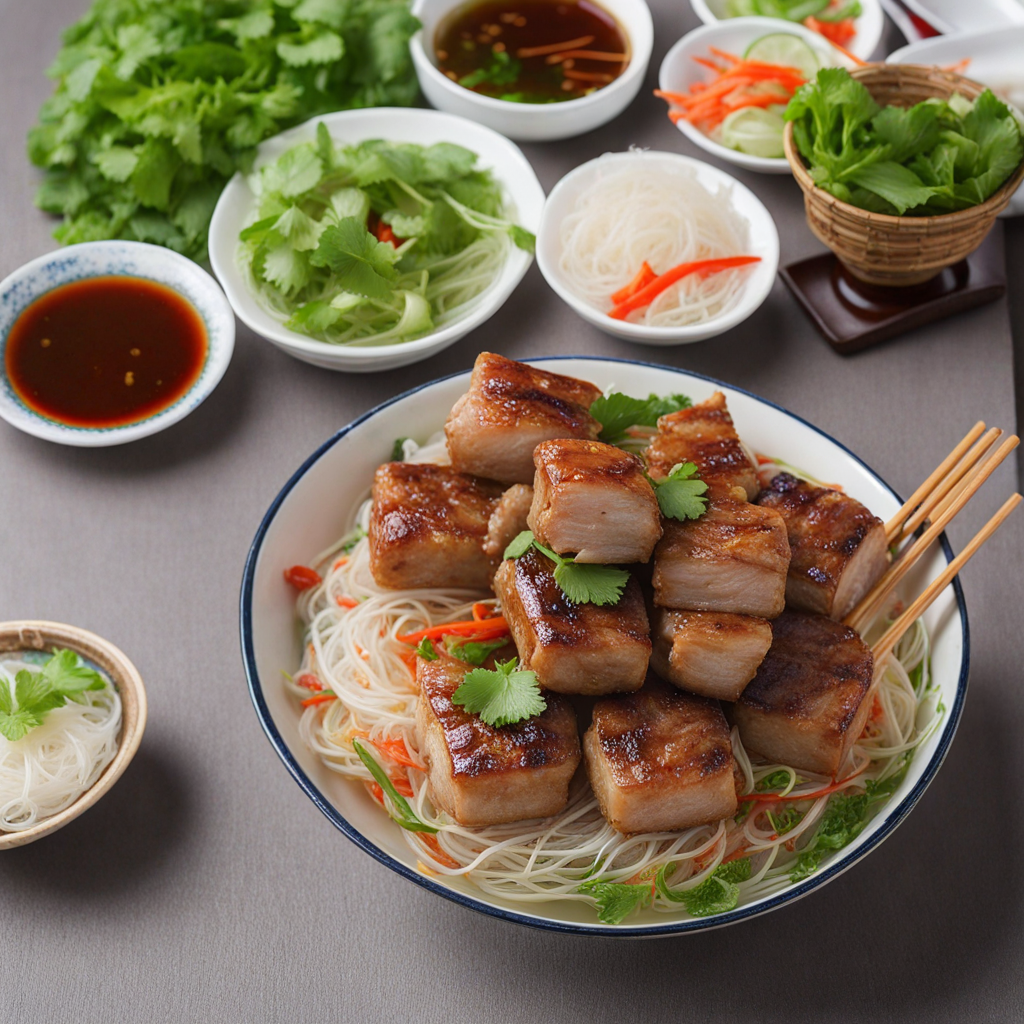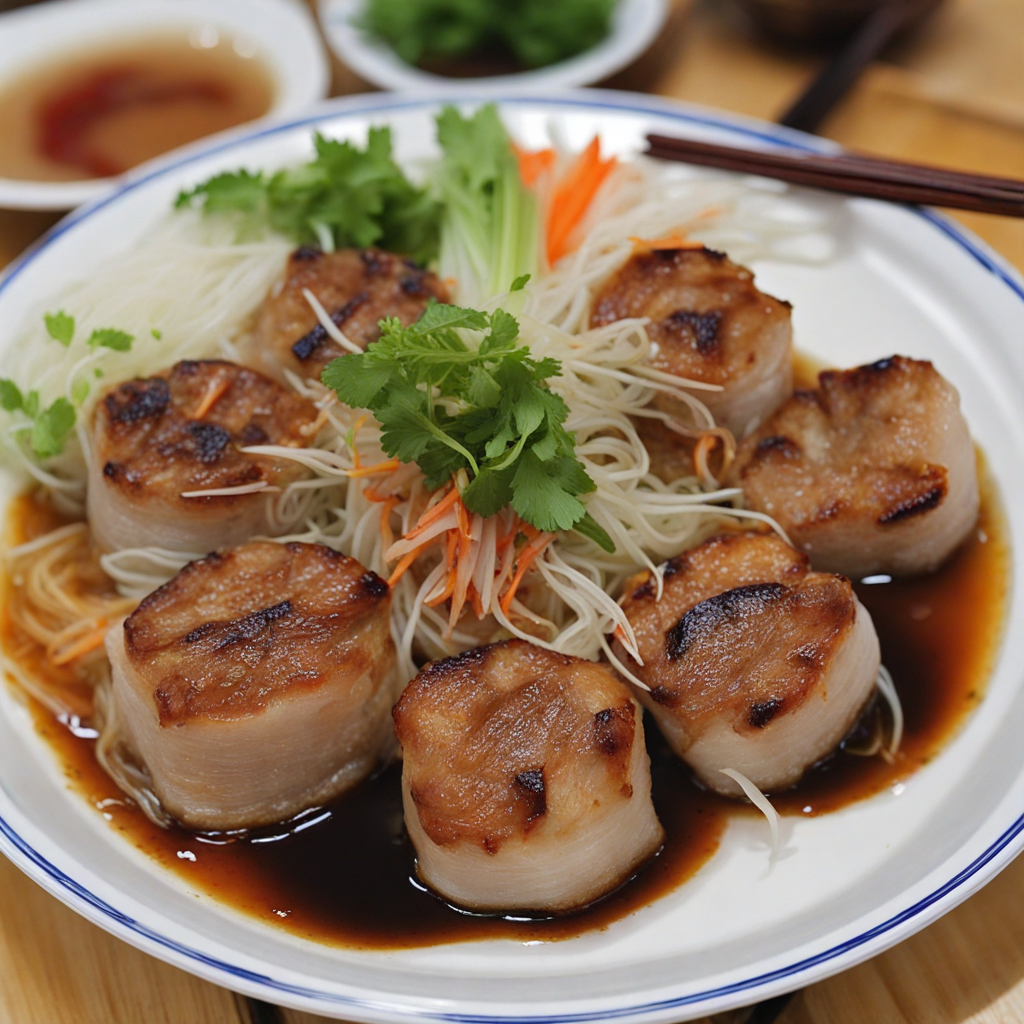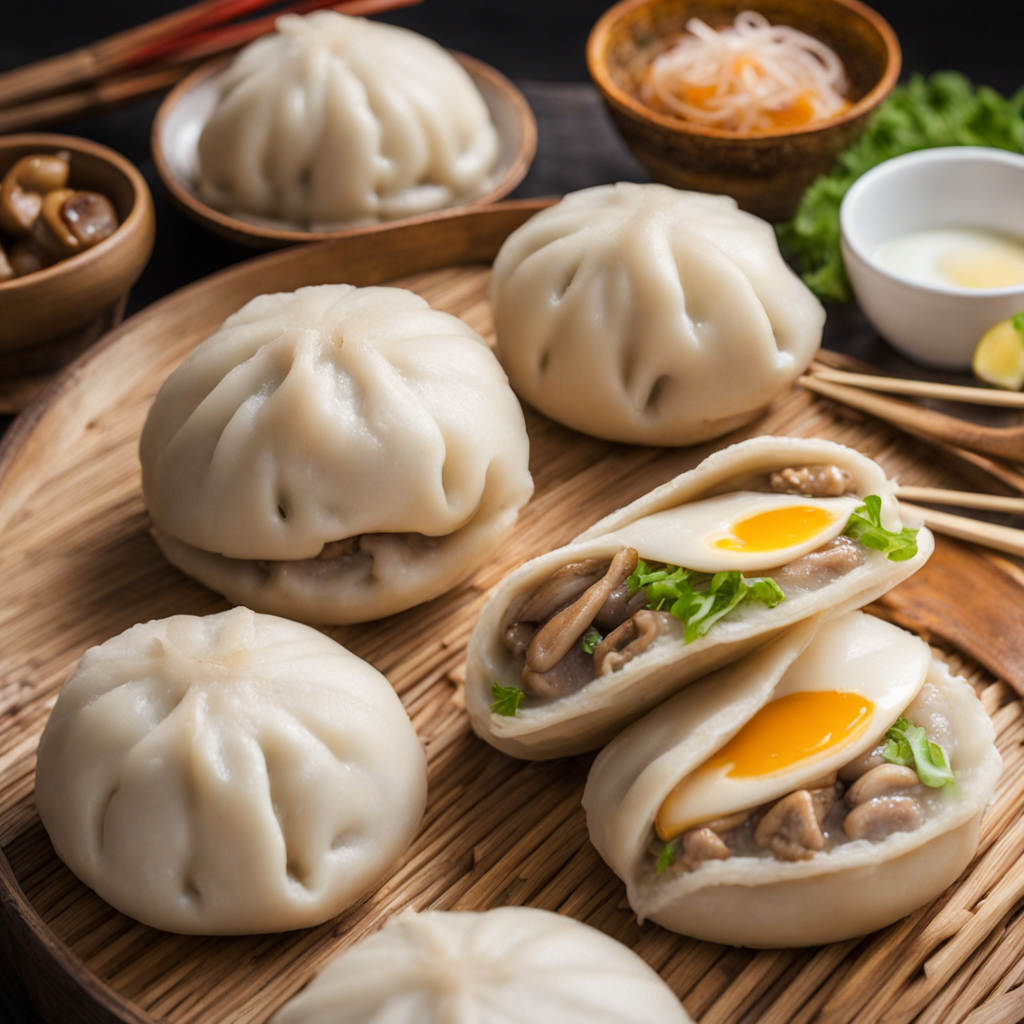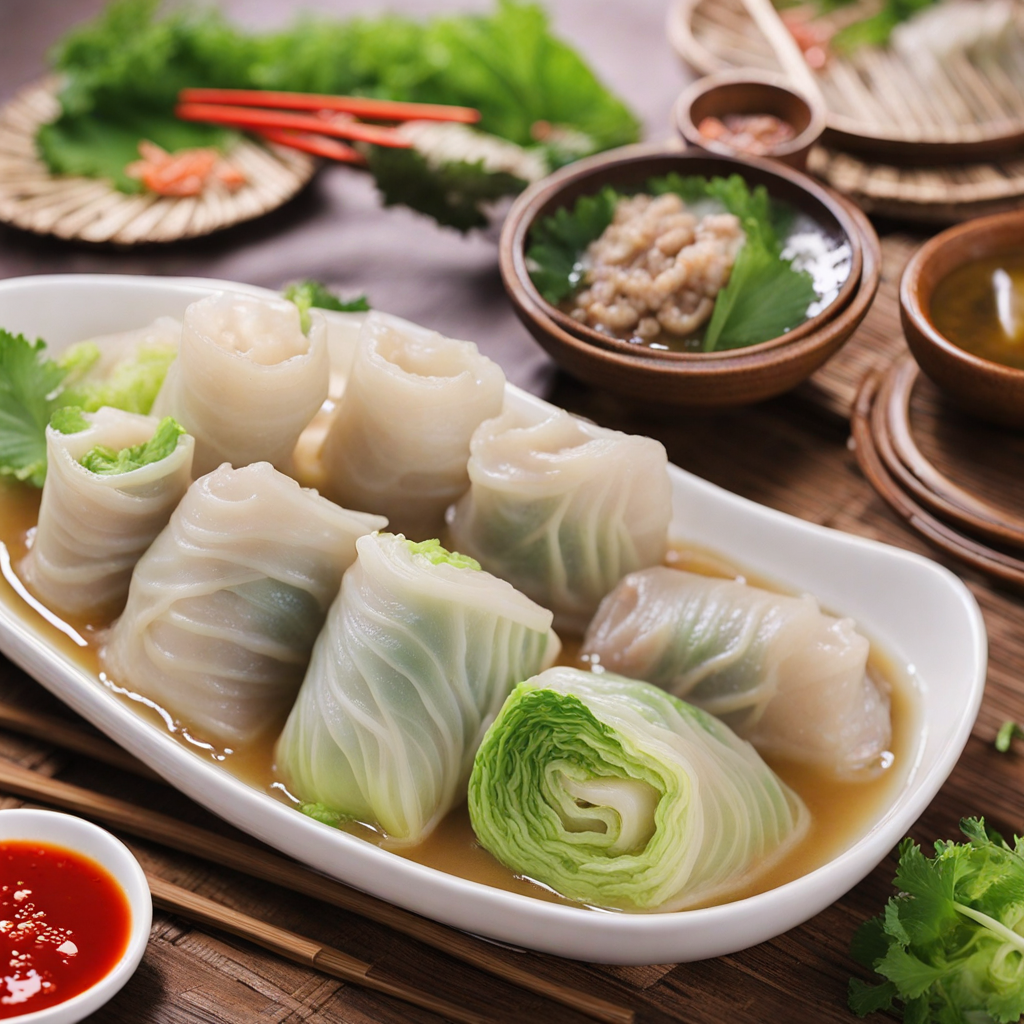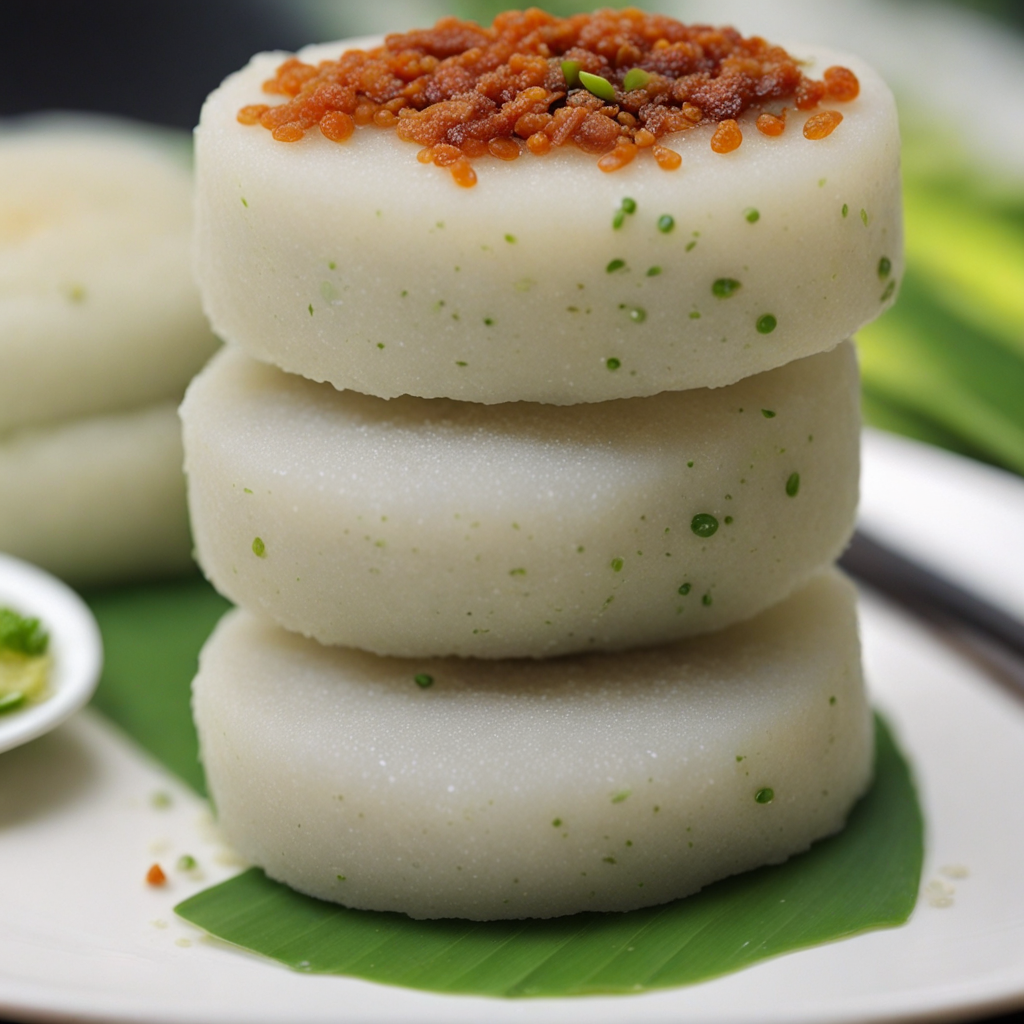Bun Cha
Bun Cha is a delightful Vietnamese dish that beautifully combines the rich flavors of grilled pork with the freshness of herbs and the tanginess of a savory dipping sauce. At its core, Bun Cha consists of grilled fatty pork (often using a blend of delicious marinated ground pork and pork belly) that is char-grilled to perfection, creating a smoky aroma and a crispy exterior. The dish is typically served alongside a bowl of sweet and sour dipping sauce, made from a harmonious blend of fish sauce, vinegar, sugar, and lime juice, which enhances the overall flavor profile and brings a refreshing balance to the dish. Accompanying the grilled pork are soft rice vermicelli noodles that offer a delicate texture and serve as the perfect base for the dish. The noodles are typically served at room temperature, allowing them to absorb the flavorful dipping sauce. Fresh herbs, such as mint, cilantro, and lettuce, are also included, providing vibrant color and adding a burst of freshness that complements the rich meat. Diners can mix and match the ingredients, creating a personalized flavor experience with each bite. Bun Cha is often enjoyed with a side of fried spring rolls, adding another layer of texture and flavor to the meal. This dish is not only a feast for the palate but also a visual delight, with its vibrant colors and fresh presentation. The combination of sweet, savory, and sour elements, along with the contrasting textures, makes Bun Cha a must-try for anyone looking to explore the diverse and exciting world of Vietnamese cuisine.
How It Became This Dish
The History of Bún Chả: A Culinary Icon of Vietnam Bún Chả, a quintessential dish from Vietnam, encapsulates the vibrant culinary traditions of the country. Renowned for its harmonious blend of flavors and textures, Bún Chả has a rich history that reflects the cultural evolution of Vietnam, particularly in its capital, Hanoi. This dish is not just a meal; it represents a tapestry of social interactions, historical narratives, and regional pride. #### Origins of Bún Chả The origins of Bún Chả can be traced back to Hanoi, particularly in the Old Quarter, where it has been a staple since at least the 1950s. However, some historians argue that its roots may extend further back, perhaps to the culinary practices of the Red River Delta region. The term "Bún" refers to rice vermicelli noodles, a staple in Vietnamese cuisine, while "Chả" denotes the grilled pork that is the dish's centerpiece. The combination of these two elements creates a dish that is both hearty and refreshing. The dish itself is believed to have been influenced by the agricultural practices of the region, where rice cultivation is predominant. The availability of fresh herbs, vegetables, and pork, which is a common protein source in Vietnamese households, laid the groundwork for what would eventually become Bún Chả. The cooking method, which involves grilling marinated pork over charcoal, is deeply rooted in Vietnamese culinary traditions, showcasing the importance of grilling in local cuisine. #### Cultural Significance Bún Chả is more than just food; it holds cultural significance in Vietnamese society. It is often enjoyed in communal settings, whether at bustling street stalls or in family gatherings. The dish exemplifies the concept of "ăn chung," or eating together, which is a vital aspect of Vietnamese culture. Sharing food fosters connections among family members and friends, creating a sense of community that is essential in Vietnamese life. In Hanoi, Bún Chả has become synonymous with the city's culinary identity. It is often associated with the images of street vendors serving fresh grilled pork alongside bowls of steaming broth and plates of vermicelli. The dish gained international notoriety in 2016 when former U.S. President Barack Obama dined at a modest Bún Chả stall in Hanoi with celebrity chef Anthony Bourdain. This moment not only elevated the dish's status on the global culinary stage but also highlighted the importance of street food culture in Vietnam. #### The Components of Bún Chả At its core, Bún Chả consists of several key components that come together to create a balanced and flavorful dish. The grilled pork is typically marinated in a mixture of fish sauce, sugar, garlic, and shallots before being cooked over charcoal. This marinade imparts a savory and slightly sweet flavor, which is complemented by the smoky aroma from the grilling process. The pork can be prepared in two forms: "Chả Lợn" (grilled pork patties) and "Chả Nướng" (grilled pork belly slices), both of which are equally popular. The dish is served with rice vermicelli noodles, which provide a light and chewy texture that contrasts beautifully with the succulent pork. Accompanying the dish are fresh herbs such as mint, cilantro, and Vietnamese coriander, which add brightness and freshness. The broth, a mixture of sweet and tangy fish sauce, vinegar, and sugar, serves as a dipping sauce for the grilled meat and noodles, bringing the dish together in a harmonious balance of flavors. #### Development Over Time Over the decades, Bún Chả has evolved, influenced by changing tastes, globalization, and the influx of culinary trends. While the classic preparation remains largely unchanged, modern iterations of the dish are now found in Vietnamese restaurants worldwide. Chefs often experiment with different types of proteins, including chicken or tofu for vegetarian options, catering to diverse palates. The dish has also been embraced by the Vietnamese diaspora, who have adapted it to local ingredients while maintaining its essence. In cities like Paris, Los Angeles, and Sydney, Bún Chả has found a new home, often served alongside other Vietnamese classics like pho and banh mi. This globalization of Bún Chả underscores the adaptability of Vietnamese cuisine and its ability to resonate with people from various cultural backgrounds. #### Bún Chả in Contemporary Vietnam In contemporary Vietnam, Bún Chả remains a beloved dish, celebrated for its simplicity and depth of flavor. It is often enjoyed during family gatherings and special occasions, symbolizing hospitality and warmth. Street vendors continue to be the heart of Bún Chả culture, with many families passing down their recipes through generations, preserving the authenticity of the dish. The dish also plays a role in Vietnam's burgeoning culinary tourism. As more visitors flock to Hanoi, they are drawn to the vibrant food scene, where Bún Chả is a must-try. Culinary tours often include stops at famous Bún Chả stalls, allowing tourists to experience the dish in its authentic setting. This exposure has led to a growing appreciation for Vietnamese cuisine, showcasing the rich history and cultural significance of dishes like Bún Chả. #### Conclusion Bún Chả stands as a testament to the rich culinary heritage of Vietnam, encapsulating the flavors, traditions, and communal spirit that define Vietnamese culture. Its origins in Hanoi, combined with its cultural significance and evolution over time, make it much more than just a dish; it is a symbol of identity, resilience, and the joy of sharing food. As Bún Chả continues to gain recognition worldwide, it serves as a delicious reminder of the importance of food in connecting people, bridging cultures, and celebrating the diverse tapestry of human experience.
You may like
Discover local flavors from Vietnam


